This is a repost from Nano-Reef
------------------------------------------------
Well, seeing as Aquatraders is selling the 20" 4x18W T5HO fixture for the low price of $50, I had to see what the unit was all about.
Initial impressions were mixed. Obviously, I was liking the price. The unit was packaged well, safely double boxed, and wrapped in bubble wrap. I didn't take any pictures of the packaging.
So here is the general fixture
I'm not liking the bent wire mounting legs. It puts the fixture way too close to the tank for comfort. With a vice, or a good set of pliers, the mount could be bent to make the fixture higher off the tank, at the expense of adjustment range. It works though, and fits a wide range of tanks. Now, they say it's a 20" fixture, but you will have a hard time fitting this fixture on a 20" tank without resting the fixture right on the rim of the tank. 21" is about the practical minimum if you want to use the legs. Not the end of the world.
The moonlights are one of the high points in the fixture. The color is decent, and pretty consistant between each LED, which is a first for Odyssea. Fluorescence is good, and the overall brightness is just enough, and not too overpowering.
So far so good, until I started to look closer.
This isn't that bad, but it certainly makes me nervous. The end caps are polystyrene, and not ceramic, polycarbonate, or any other material that is commonly used in the lighting industry. If everything runs the way it's supposed to, they will be fine. If they overheat, or short, they will catch fire, as they aren't self extinguishing.
My next issue is the ballasts. The first thing you notice as you pick them up is that they weigh nothing. Anyone who is into PC building knows that the first sign of a good quality power supply is it's weight.
Not much in there huh? This is not a smart ballast. It's little more than a very basic switching power supply, which isn't that good. First, it's voltage driven, not current driven like it should be. The ballast is designed to output a fixed voltage, regardless of the bulb connected to it. Much like LEDs, fluorescents should be current driven to get the most out of them. Second, there is no protection from shorts (other than a fuse on the input side), over current, or end of life failure, which is standard on most ballasts. Third, it's not particularly efficient. Fourth, there is no programmed start feature, meaning it takes an age for the bulbs to warm up.
Wattage draw on each ballast was about 30W on a Kill-a-Watt. Now, that's two bulbs connected to it. I'd be willing to bet that each bulb is drawing no more than 13W after you factor in "ballast" losses. Somewhat expected based on Odyssea's track record.
Ok, on to performance...
I ended up taking measurements at 18" from the fixture. PAR wasn't too bad actually. I ended up getting a peak PAR reading of 50 once everything was warmed up. Now, that doesn't sound like much, but considering the ballast issues, it's not bad. I even compared them to our 18" UVL T5s, and only managed to score another 10 PAR.
Here is the breakdown, with spectral plots!
This is 50 PAR at 18". Color isn't that great overall. It's quite green/cyan, and is due to the daylight bulb.
This is the daylight bulb. You can see the typical green spike, but there is a big fat cyan bubble that is really killing the color. Only 20 PAR out of these guys (two bulbs).
The blues look a lot better. The color is actually pretty decent, with a nice rich blue. PAR is on par with the UVL 454's at 30. The UVL's do much better as the wattage increases.
Here are the UVL graphs. I used Actinic Whites and 454's. If I had Indigo Suns, the PAR would have been higher.
All on (60 PAR)
Actinic White (30 PAR)
454 (30 PAR)
I want to do some followup PAR measurements that use the spectrometer to get some comparisons that are a little more accurate than the Apogee meter I was using. I'll post them up soon when I get a chance to take them.
So, what's the moral of the story? You get what you pay for. The fixture is ok. The reflector is crap. The ballasts are questionable, but the bulbs aren't too bad, especially the actinic blue. I'm sure it will be fine for a shallow tank for someone on a budget, but if your tank is any deeper than 12" and you want to keep more than softies, you may want to look elsewhere.

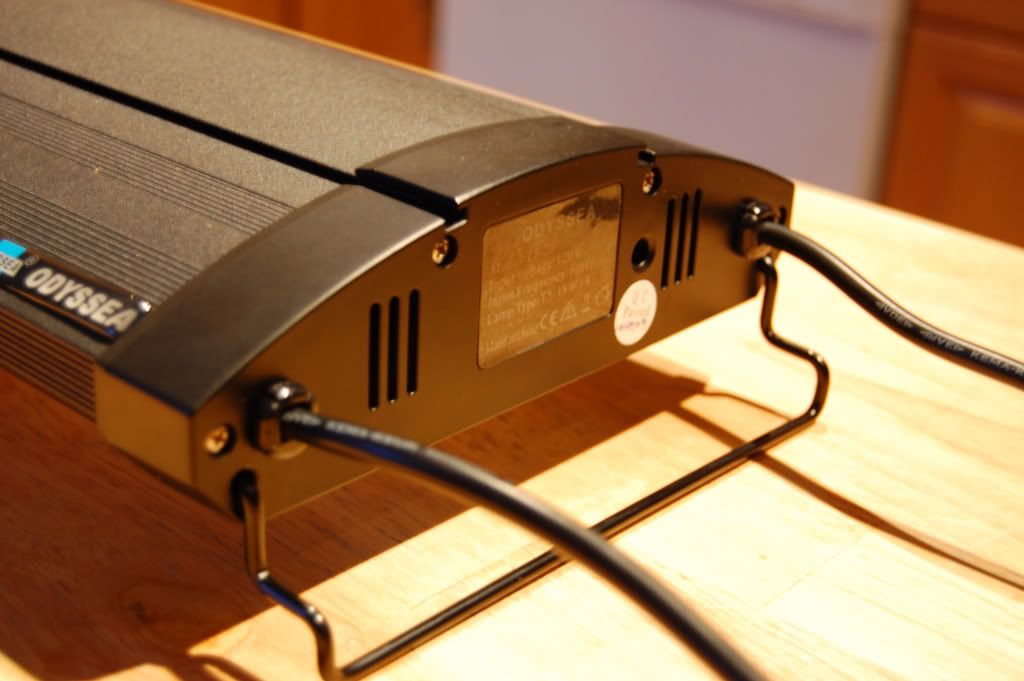
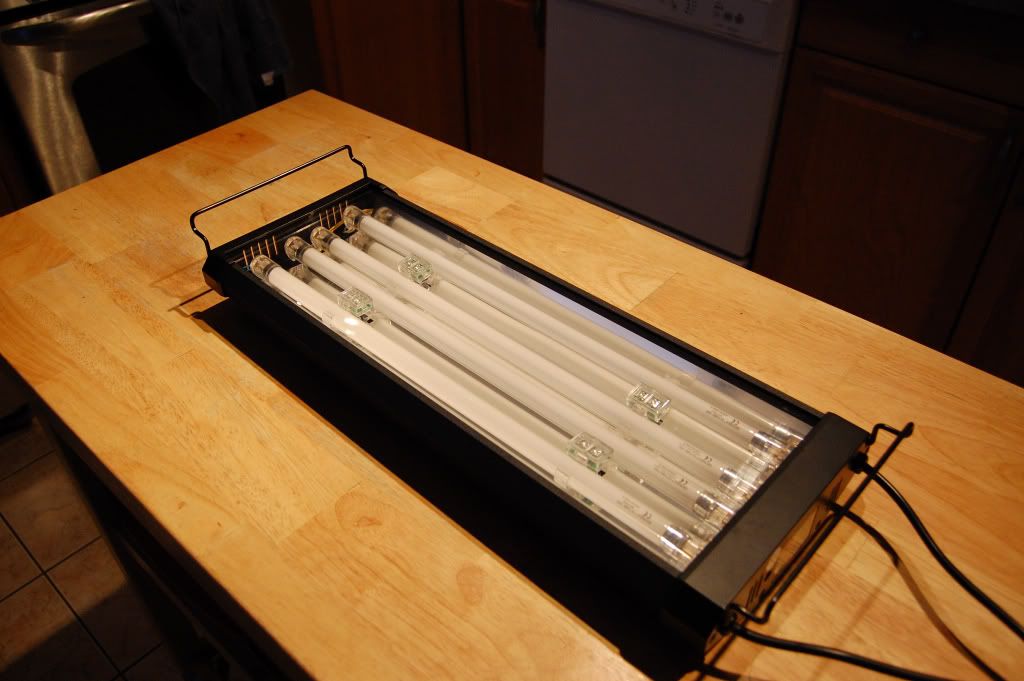
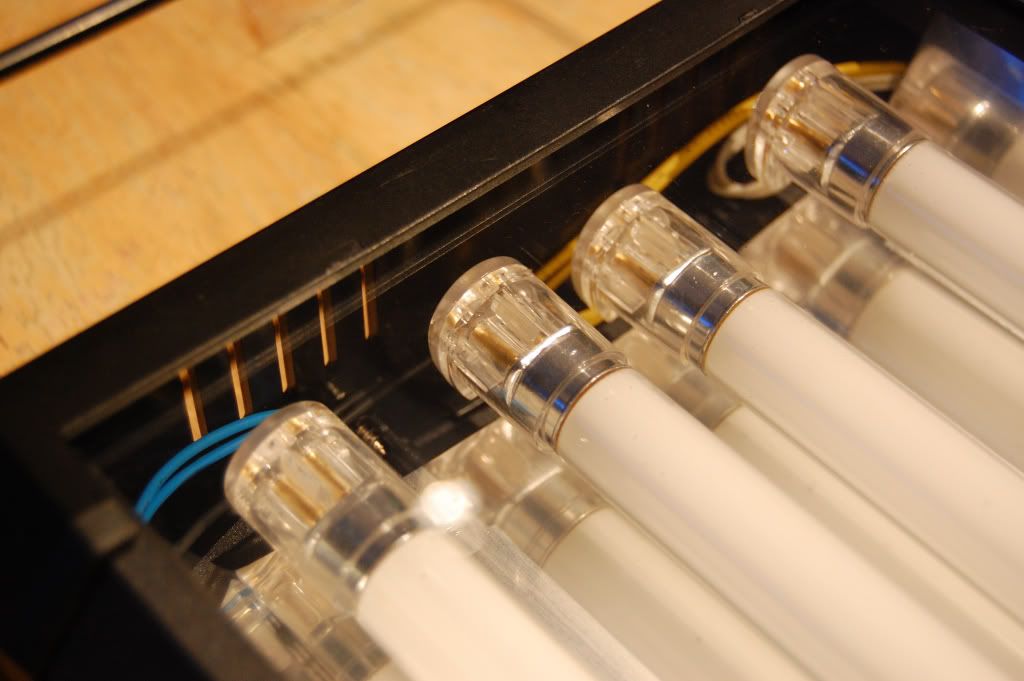
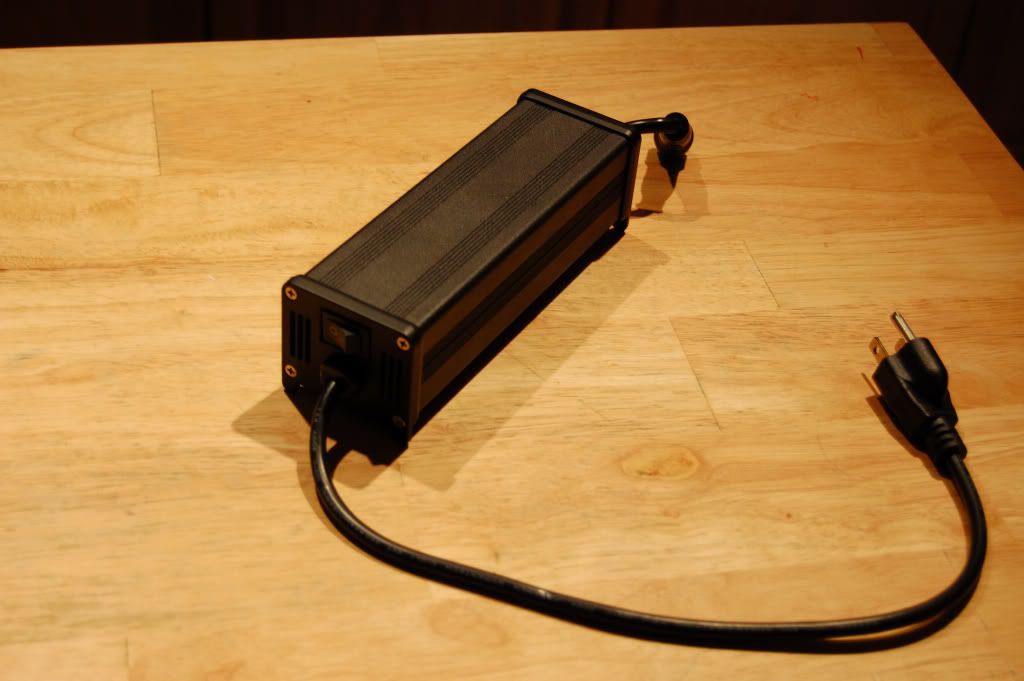
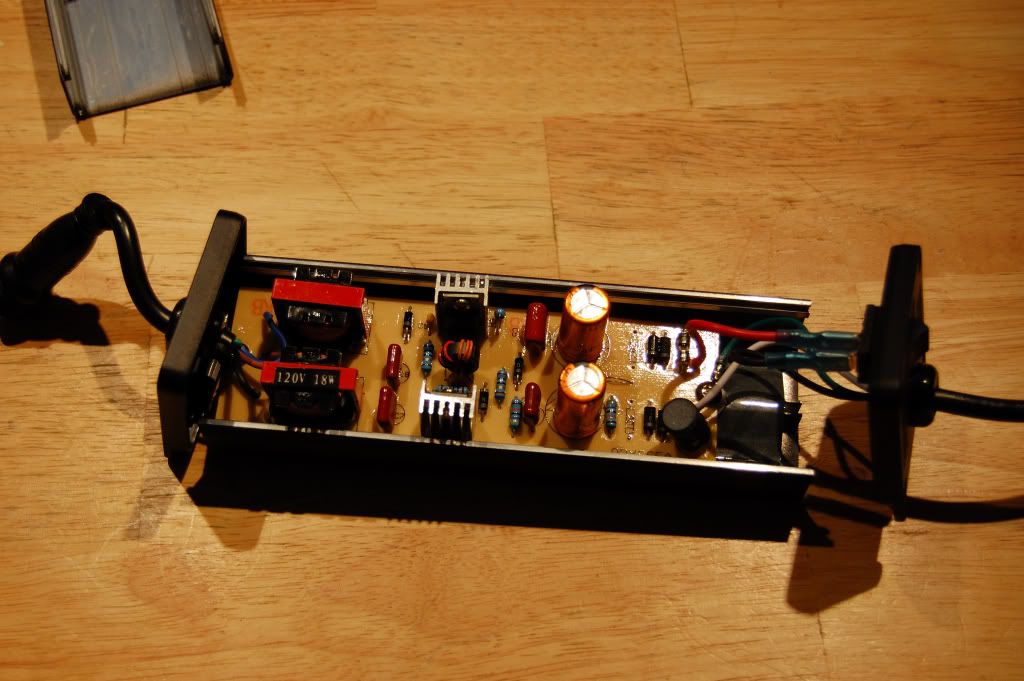
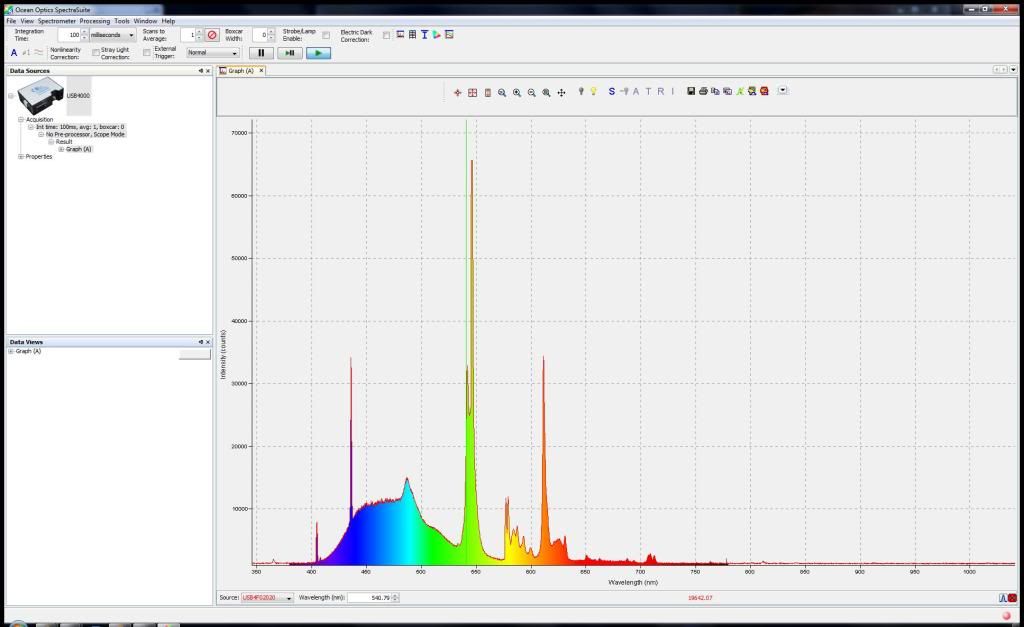
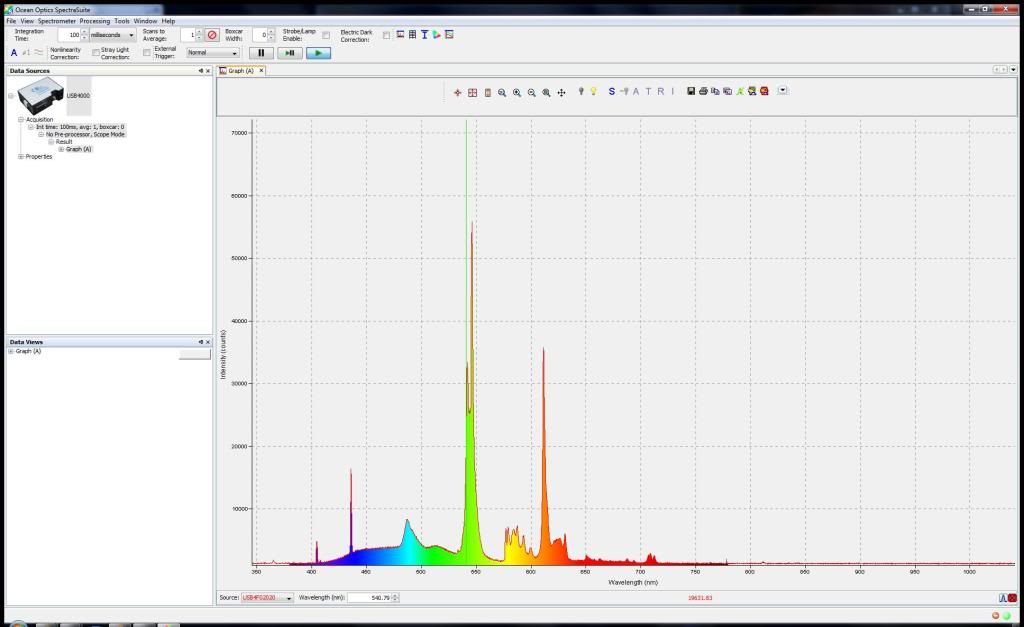
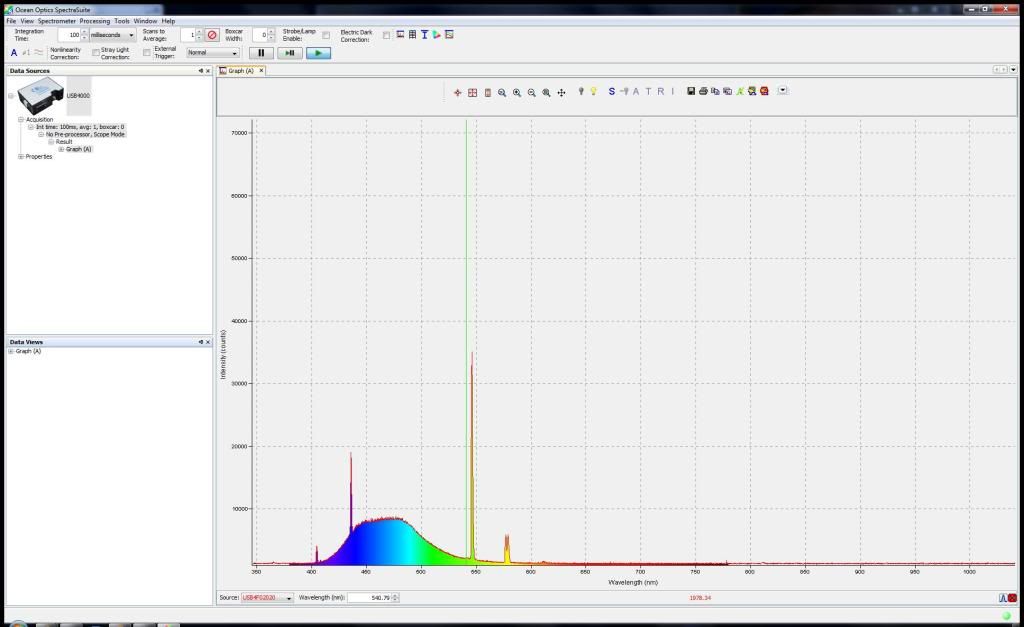

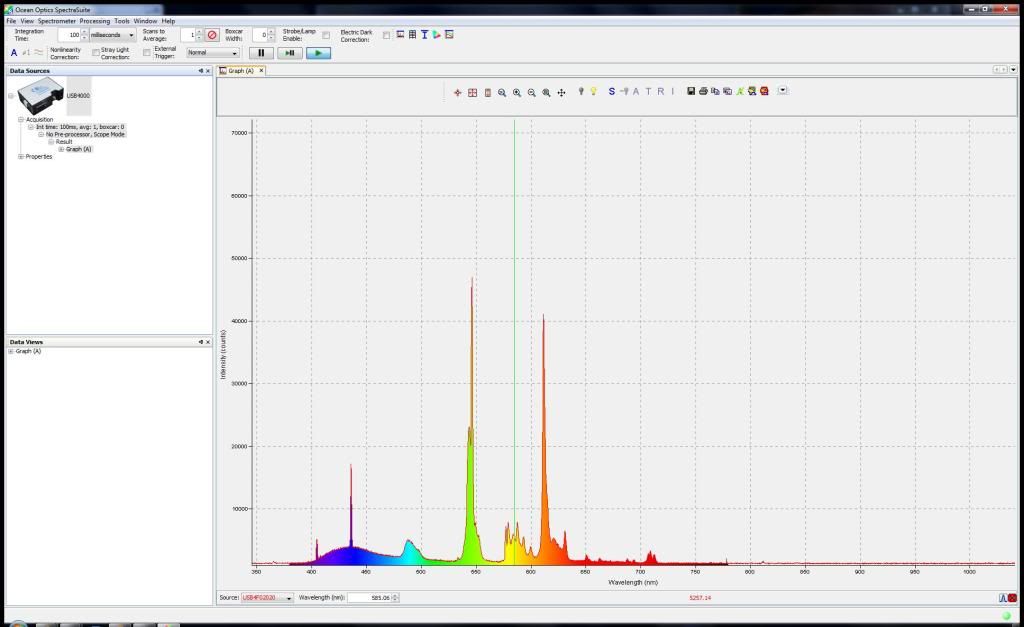
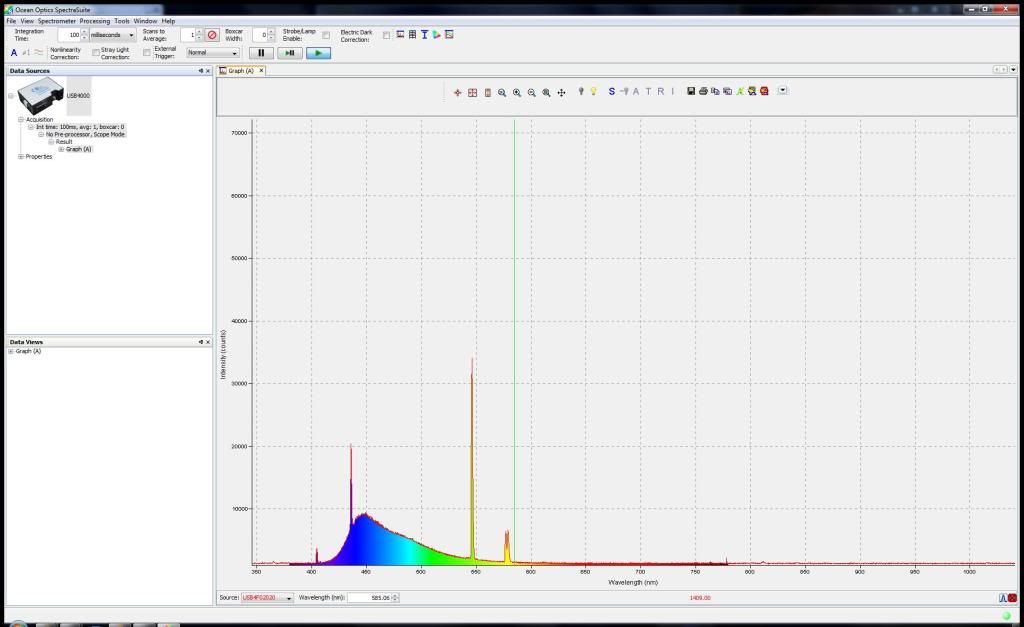
Hi,
ReplyDeleteCan you please let me know which tools you are using to take those mesurements?
Thanks,
JM
Basic PAR measurements are done with an Apogee Quantum meter set to Sunlight calibration. Spectral data was taken with an Ocean Optics USB4000 spectrometer and Spectrasuite software.
ReplyDeleteHi Clive,
ReplyDeleteThanks for your prompt reply.
I'm building a 36" deep aquarium and I want to make sure that I have enought PAR on the ground.
I looked at Apogee's products, and there is MQ and SQ products... One a bit to expensive for me, and the other one that I can afford.
It seems that I need the 2 to take the measurements. Can you confirm?
Thanks.
The SQ model is just the sensor. You will need a decent multimeter to get accurate results. Keep in mind that there are two calibrations, and you will need to pick one based on the lighting type you are going to measure. The sunlight calibration (SQ-110) is best for sunlight and LEDs. The Electronic calibration (SQ-120) is best for PCs, T5HO, and MH.
ReplyDeleteThe MQ-200 is a better choice overall, as it makes for much faster measurements (no setup required), doesn't require voltage to PAR conversions, has both sunlight and electronic calibrations, and has data-logging capabilities.
Super, thanks again for all those details.
ReplyDeleteI will take a closer look to those products and see I can afford one.
JM
Hi Clive,
ReplyDeleteOne last ;)
Regarding the MQ-200, is the lens part waterproof? I mean, can I put it into my aquarium to see the impact of the water on the light? Or should I do my tests before I put water into it?